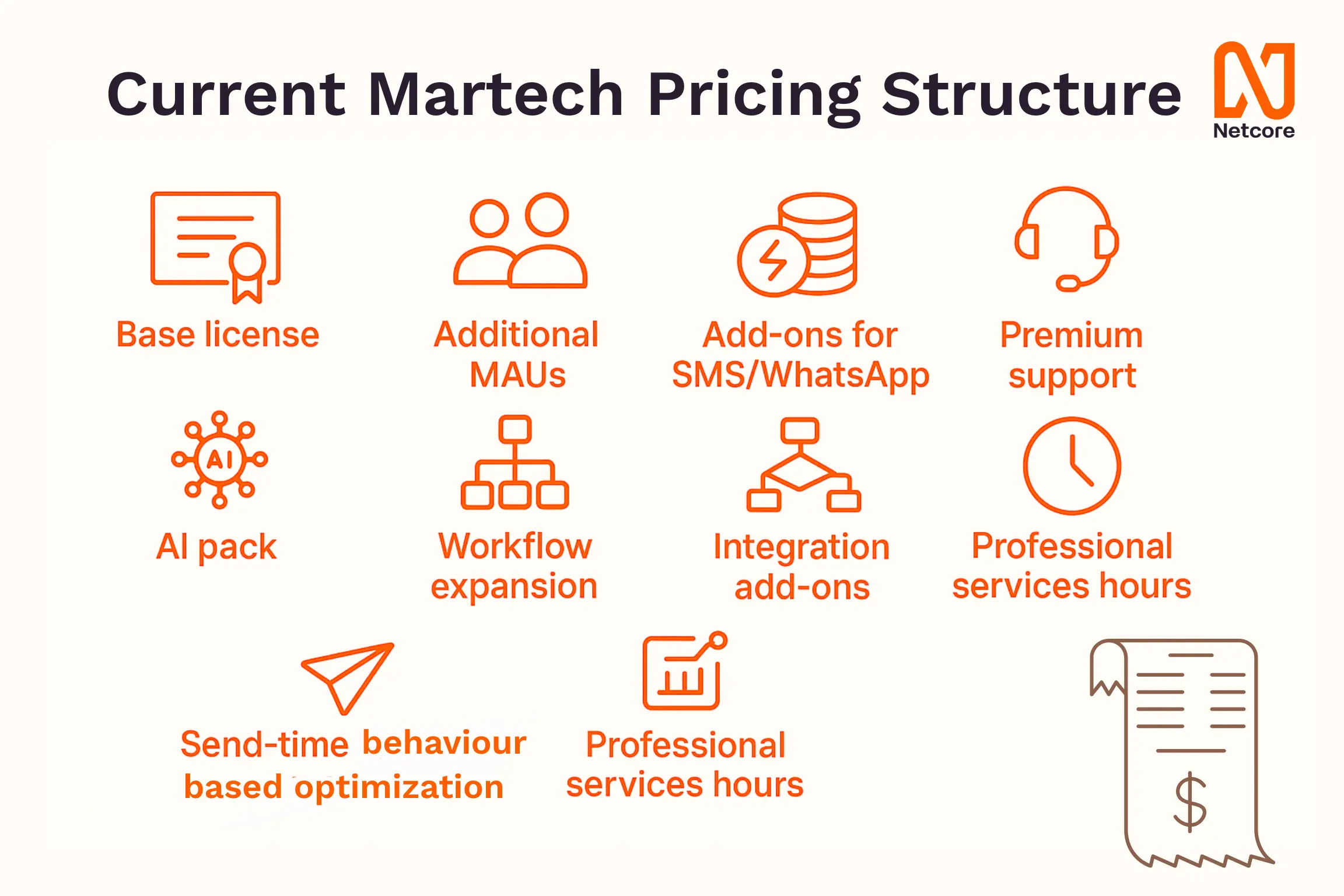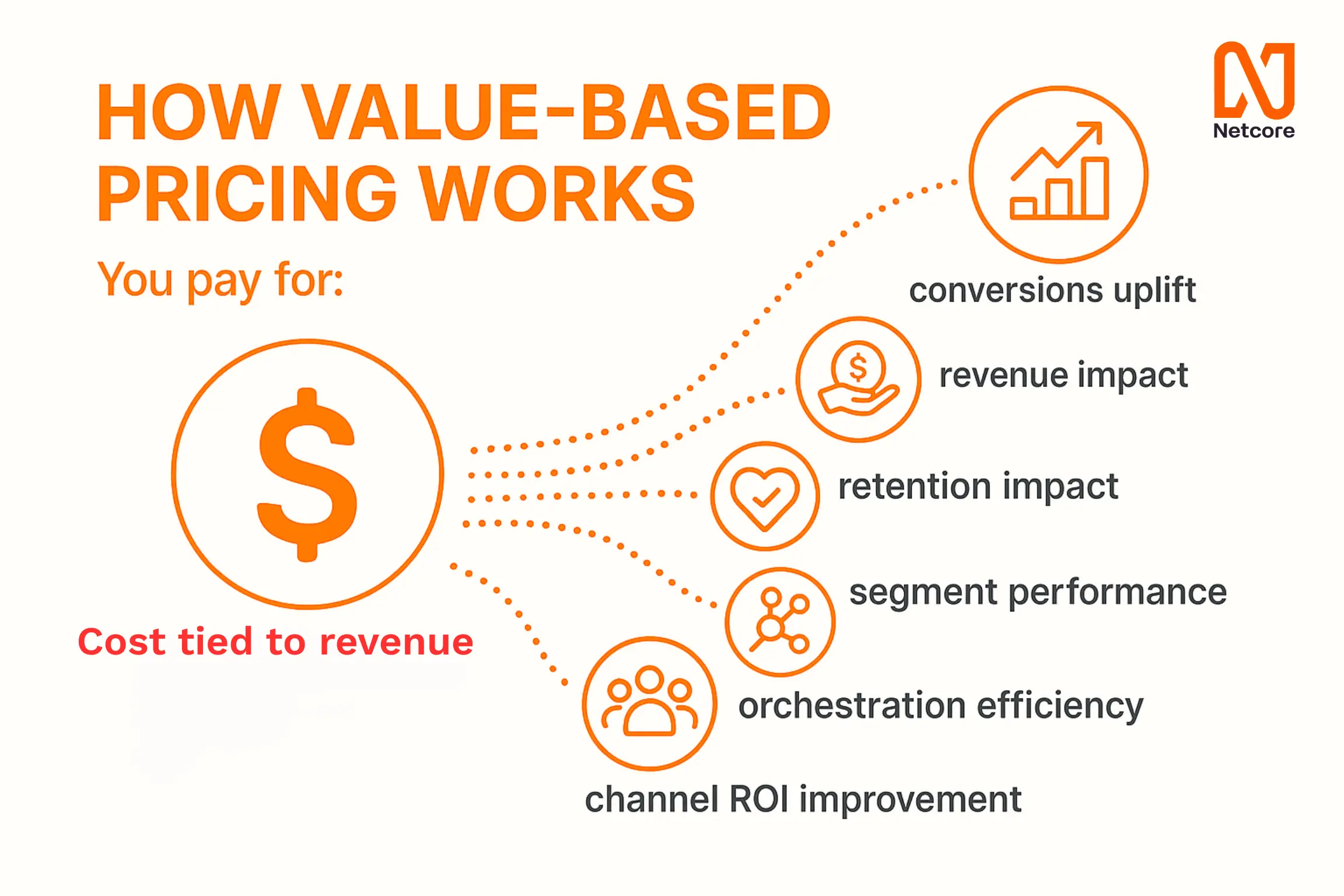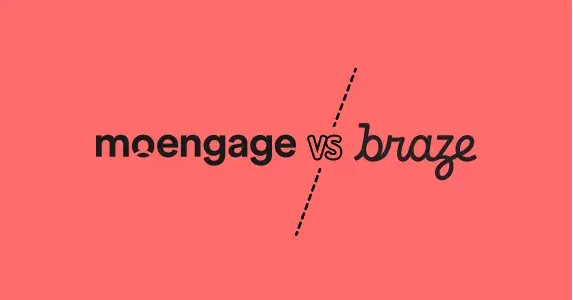- The real cost structure behind modern martech
- The hidden tax CMOs end up paying
- Why traditional pricing creates inefficiency
- The emerging ROI-driven models dominating 2026
- Why Value-Based Pricing, led by Netcore, is becoming the global standard
- How to evaluate your next platform through a CFO lens
- A practical, board-ready framework to defend (and justify) every dollar you spend
Across boardrooms in 2026, one question echoes louder than any campaign pitch:
“Show me the ROI.”
CMOs everywhere are facing the sharpest pivot in modern marketing:
Every dollar must be defended. Every tool must justify its cost. Every channel must earn its keep.
It is no longer enough to show activity — impressions, sends, clicks, or vanity metrics.
Boards want financial clarity, CFOs demand predictable efficiency, and CEOs expect marketing to generate profit, not noise.
But here’s the paradox:
CMOs are expected to deliver more, with fewer tools, smaller teams, and tighter budgets.
Over the past 12 months, at Netcore, we’ve spoken with leaders from the ecommerce, BFSI, travel, retail, SaaS, and gaming sectors. Different industries, same tension:
- “Our stack is bloated.”
- “We’re paying for overlapping features.”
- “Our renewal cost just doubled.”
- “We can run only half the capabilities we pay for.”
And the real kicker:
Most martech pricing models were built for 2014 — not 2026. You will know why I am saying this in the blog ahead.
So companies overpay while underutilising. Marketing teams stretch themselves thin across platforms that refuse to scale linearly with their needs. This guide is built for CMOs who refuse to accept that model and are keen to figure out a pricing model that proves better ROI.
Current Martech Platform Pricing Structure
Imagine a CMO approves a renewal for any Martech platform or a customer engagement platform.

Suddenly, the contract that started at $50,000/year quietly becomes $1,00,000/year.
Sounds familiar? That’s because most martech pricing models reward volume, not value.
Types of Platform Pricing
1. Volume-Based Pricing Punishes Growth
Most martech platforms charge more as your business grows — more customers, more events, more sends, more traffic… more cost.
This turns scale into a penalty. Every step forward increases your bill, even if revenue doesn’t grow proportionally.
2. Add-On Fees Create “Pricing Fragmentation”
Vendors often lure companies in with low entry pricing, then add fees once the team becomes dependent.
Suddenly, you’re paying separately for AI features, predictive segments, WhatsApp throughput, app push, dedicated IPs, and premium support.
The end result is a silent, steady cost creep that blows up your budget.
3. Overlap Between Tools
Most companies unknowingly pay 2–5 vendors for the same capabilities like segmentation, analytics, web personalization, push notifications, A/B testing, and CDP-lite functions.
This overlap creates confusion about ownership and makes ROI nearly impossible to measure.
Costs go up without any meaningful lift in performance.
4. Traditional Pricing Rewards Activity & Not Outcomes
Current pricing models charge you for what you do, not what you achieve.
More sends, more users, more events = higher bills… even if conversions remain flat.
CMOs are done paying for “usage” when what they need is predictable, measurable growth.
Why Traditional Pricing Models Fail CMOs
1. MAU-Based Pricing
You pay for every Monthly Active User, even if half are inactive, unengaged, or unreachable.
It forces brands to pay for volume instead of value.
2. Event-Based Pricing
Every view, visit, click, purchase, and product event costs money.
High-growth brands end up punished for the very activity that signals momentum.
3. Channel-Based Pricing (Email, SMS, WhatsApp)
Every message adds to your bill, especially during sales, festive periods, or rapid growth phases.
Retention becomes expensive at the exact moment you need to engage customers most.
4. Feature-Based Pricing
AI, journeys, analytics, predictive segments, experimentation — all locked behind add-ons.
Brands are forced into endless upgrades just to stay competitive.
5. User-Based Pricing
You pay per marketer, analyst, or developer using the platform.
This penalises collaboration and discourages cross-functional adoption.
6. Platform + Services Pricing
In case you need help, a strategy session, or quick tech fixes.
Professional services are billed separately, turning support into an ongoing cost instead of a partnership.
The New Paradigm: Value-Based Pricing (VBP)
Under a Value-Based Pricing model, brands stop paying for only “activity” and start paying for “outcomes.” This is a complete inversion of how traditional platforms charge, no more penalties for higher MAUs, increased events, extra sends, or seasonal spikes. Instead of your bill rising every time your business grows, costs only scale when the platform actually delivers incremental revenue.
For CMOs and CFOs obsessed with profitability, this fundamentally changes the economics of retention: every dollar spent directly correlates with business lift, not system usage. It eliminates the waste baked into legacy pricing models and aligns platform incentives with the only metric that matters: your revenue.
Instead of just charging for:
- sends
- events
- MAUs
- channels
- add-ons
VBP charges are based on the actual outcomes marketing generates. This is the future of martech.

Why Choose Netcore?
Some of the Netcore’s core offerings are as follows:
1. Outcome-Linked, Value-Based Pricing
The only major platform where pricing scales with success and not with usage.
2. Agentic AI Built for Revenue
Autonomous agents reduce manual operations costs and increase speed.
3. 95–99% Deliverability Performance
Backed by proprietary ESP, AI-based sending optimization, and a global deliverability team.
4. Enterprise-Grade Compliance (CMMI Level 3)
Netcore works with global enterprise clients and is trusted for its appraisal in CMMI level 3 certification, successfully secured attestation for compliance with the Digital Personal Data Protection (DPDP) Act of 2023.
If you’re ready to break out of legacy pricing traps and move to a model where your platform grows only when your revenue does, then it’s time to rethink how your Martech dollars are spent. And if you want to see exactly how this works for your business, with real numbers, real ROI projections, and a roadmap designed around your revenue goals. Book a consultation call with our team.
 Holiday Sales Are Won Now — Grab the 2025 Holiday Marketing Guide to Unlock More Revenue.
Holiday Sales Are Won Now — Grab the 2025 Holiday Marketing Guide to Unlock More Revenue. 












